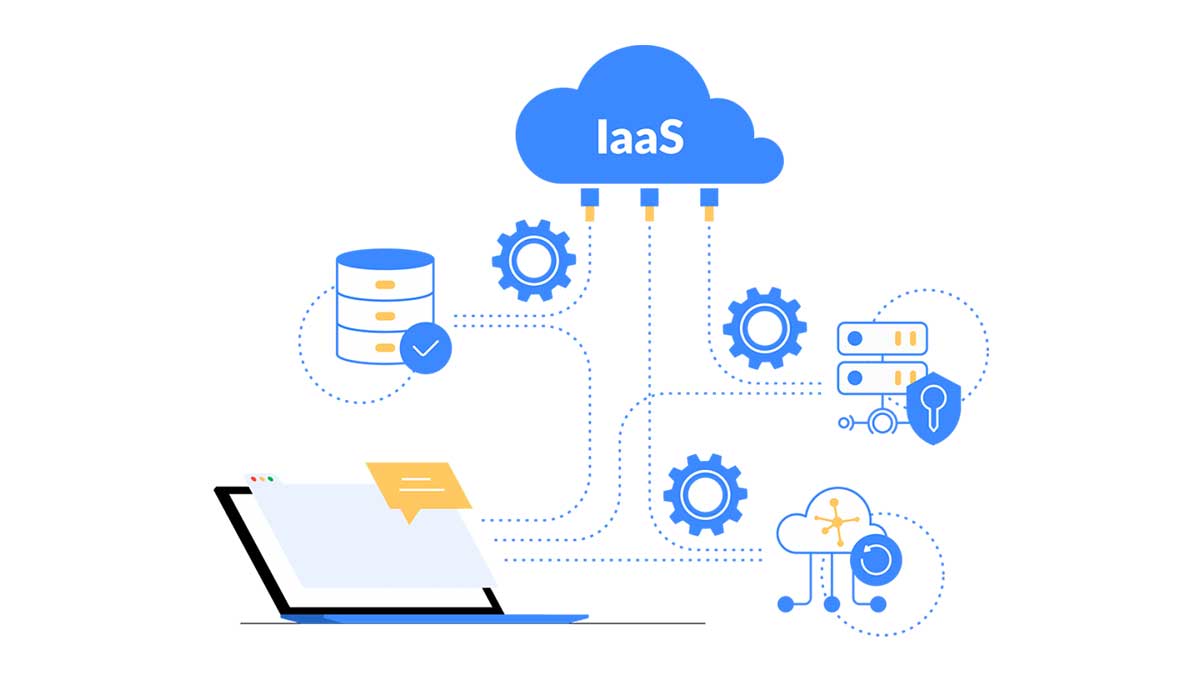IaaS (Infrastructure as a Service) is a cloud computing model that provides businesses with the compute, storage, and network resources they need on demand with pay-as-you-go.
An IaaS solution reduces the cost of maintaining local data centers, saves on equipment purchases, and gains valuable business insights in real time through business intelligence in the cloud. IaaS solutions provide the flexibility to scale IT resources based on demand. The cloud also helps speed up time-to-market for products and improve the reliability of your IT infrastructure.
Simple decryption. How does IaaS work?
Each resource is offered as a separate service component. The Company pays for specific resources only at the time of use and can refuse them at any time when they are not required for business. Migration, deployment of computing power and management falls on the shoulders of the IaaS provider.
An IaaS virtual infrastructure eliminates the hassle of predicting and purchasing hardware, as well as managing physical servers and data center infrastructure. The company is fully focused on business areas: it is engaged in optimization, development of existing services and products, as well as the creation of new ones.
What do businesses need to know about the IaaS service?
According to Gartner, the Infrastructure-as-a-Service model has shown steady growth for several years now:
- In 2019, the volume of the public cloud market reached $242.7 billion;
- In 2020, growth was 24%, the market reached $312.4 billion;
- 2021 – growth by 29%, the market volume amounted to $408.6 billion;
- Projected growth for 2022 is 20.4%. According to analysts, the market will reach $494.7 billion;
- By the end of 2023, Gartner experts predict that the public cloud market will reach nearly $600 billion.
Why do businesses choose IaaS cloud infrastructure?
- Reduces costs and increases scalability
One of the key benefits of the IaaS cloud is the reduction in hardware infrastructure costs combined with greater business agility and agility. The pay-as-you-go model allows users to pay only for the resources they consume. Because enterprises can scale up resources quickly, developers can also run temporary workloads, test new applications, or prepare for seasonal traffic spikes.
- Is a space for business intelligence
IaaS solutions are an ideal environment for managing big data because they can handle large volumes and integrate with business intelligence tools. Based on the obtained business data, companies can predict trends, improve customer experience and create new products and services.
- Increases the level of information security
As part of the SLA, the cloud provider is responsible for the security of all applications and data hosted in the cloud. If a business works with highly sensitive information, for example, personal data, within the framework of the IaaS model, the service provider can place the data in a closed loop, ensuring their protection.
- Helps to innovate quickly and deliver new applications and services to users faster
When you launch a new product, with IaaS technology, the necessary computing power can be deployed in minutes, not weeks as is the case with hardware. And because the user doesn’t need to set up the underlying infrastructure, IaaS allows for the fastest time to market.
- Allows you to build a more effective disaster recovery plan
Most disaster recovery plans are expensive and cumbersome. In the case of geographical distribution, the business needs different disaster recovery (DR) and business continuity (BC) plans. The IaaS model allows you to create combined disaster recovery plans. In the event of an emergency, the cloud provides rapid disaster recovery that reduces costs and ensures data recovery through cloud backup.
Who is the IaaS model for?
Infrastructure as a service is a modern model of virtualization of computing resources that will suit any business: SMB-sector and enterprise-level companies from a wide variety of industries. But for which organizations infrastructure service is most relevant?
Geographically distributed business
Infrastructure Services provide increased flexibility for geographically dispersed teams. Cloud solutions provide flexible resource management anywhere in the world. The cloud model allows teams to focus on business-critical areas and minimize the risks of unavailability of services and systems.
Startups
At the launch stage, the team does not have large financial resources, so a cost-effective IT solution is needed, which, at the same time, will cover all the needs of the project. For startups, the IaaS service will allow you to optimize your IT budget and purchase computing resources for the needs of the project “here and now”, not to worry about budget overruns and lack of capacity in the event of a rapid project growth.
A business that is subject to seasonal loads on information systems and applications
The load on client services, applications and various information systems can be constant and variable. During the period of seasonal sales, the influx of visitors and surges in demand, the correct determination of the required amount of “iron”, which will allow you to withstand the entire load, is extremely difficult. So, a business faces either a shortage of computing resources or an overabundance of equipment. When choosing a virtual infrastructure, this problem is instantly solved: the capacity in the cloud can be increased and reduced depending on the workload and avoid budget overruns in case of an error in forecasting.
And in case of a shortage of hardware in the market, cloud infrastructure is the best solution. This approach will help maintain the continuity and stability of the business even in the event of failures in the supply of equipment.
Need to innovate and test business hypotheses
A growing business needs to continuously test new hypotheses and approaches to developing products and services. When choosing the IaaS model, all the necessary tools for efficient development are available directly from the cloud. In a virtual environment, there is always enough space for testing hypotheses and new products, and after the test, the used capacities can be quickly curtailed. This is most relevant for companies at the stage of active growth and businesses developing new directions.

